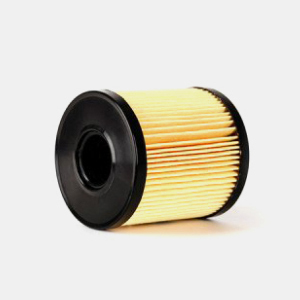-
 Afrikaans
Afrikaans -
 Albanian
Albanian -
 Amharic
Amharic -
 Arabic
Arabic -
 Armenian
Armenian -
 Azerbaijani
Azerbaijani -
 Basque
Basque -
 Belarusian
Belarusian -
 Bengali
Bengali -
 Bosnian
Bosnian -
 Bulgarian
Bulgarian -
 Catalan
Catalan -
 Cebuano
Cebuano -
 China
China -
 Corsican
Corsican -
 Croatian
Croatian -
 Czech
Czech -
 Danish
Danish -
 Dutch
Dutch -
 English
English -
 Esperanto
Esperanto -
 Estonian
Estonian -
 Finnish
Finnish -
 French
French -
 Frisian
Frisian -
 Galician
Galician -
 Georgian
Georgian -
 German
German -
 Greek
Greek -
 Gujarati
Gujarati -
 Haitian Creole
Haitian Creole -
 hausa
hausa -
 hawaiian
hawaiian -
 Hebrew
Hebrew -
 Hindi
Hindi -
 Miao
Miao -
 Hungarian
Hungarian -
 Icelandic
Icelandic -
 igbo
igbo -
 Indonesian
Indonesian -
 irish
irish -
 Italian
Italian -
 Japanese
Japanese -
 Javanese
Javanese -
 Kannada
Kannada -
 kazakh
kazakh -
 Khmer
Khmer -
 Rwandese
Rwandese -
 Korean
Korean -
 Kurdish
Kurdish -
 Kyrgyz
Kyrgyz -
 Lao
Lao -
 Latin
Latin -
 Latvian
Latvian -
 Lithuanian
Lithuanian -
 Luxembourgish
Luxembourgish -
 Macedonian
Macedonian -
 Malgashi
Malgashi -
 Malay
Malay -
 Malayalam
Malayalam -
 Maltese
Maltese -
 Maori
Maori -
 Marathi
Marathi -
 Mongolian
Mongolian -
 Myanmar
Myanmar -
 Nepali
Nepali -
 Norwegian
Norwegian -
 Norwegian
Norwegian -
 Occitan
Occitan -
 Pashto
Pashto -
 Persian
Persian -
 Polish
Polish -
 Portuguese
Portuguese -
 Punjabi
Punjabi -
 Romanian
Romanian -
 Russian
Russian -
 Samoan
Samoan -
 Scottish Gaelic
Scottish Gaelic -
 Serbian
Serbian -
 Sesotho
Sesotho -
 Shona
Shona -
 Sindhi
Sindhi -
 Sinhala
Sinhala -
 Slovak
Slovak -
 Slovenian
Slovenian -
 Somali
Somali -
 Spanish
Spanish -
 Sundanese
Sundanese -
 Swahili
Swahili -
 Swedish
Swedish -
 Tagalog
Tagalog -
 Tajik
Tajik -
 Tamil
Tamil -
 Tatar
Tatar -
 Telugu
Telugu -
 Thai
Thai -
 Turkish
Turkish -
 Turkmen
Turkmen -
 Ukrainian
Ukrainian -
 Urdu
Urdu -
 Uighur
Uighur -
 Uzbek
Uzbek -
 Vietnamese
Vietnamese -
 Welsh
Welsh -
 Bantu
Bantu -
 Yiddish
Yiddish -
 Yoruba
Yoruba -
 Zulu
Zulu
Effective Hail Protection Networks for Agricultural and Urban Areas
Understanding Antihail Nets A Modern Solution to Hail Damage
Hailstorms can be devastating, causing significant damage to crops, vehicles, and infrastructure. Farmers, in particular, face considerable risks during hail season, as hail can destroy entire fields of produce in a matter of minutes. To combat this issue, many have turned to innovative solutions like antihail nets. These protective structures offer an effective way to shield crops from the harmful effects of hail, while also providing additional benefits that contribute to sustainable farming practices.
Antihail nets are specially designed nets that are installed over agricultural fields. Their primary purpose is to absorb the impact of falling hailstones, which can range from small pellets to large ice chunks. These nets are typically made from durable materials such as high-density polyethylene, which is designed to withstand harsh weather conditions while maintaining its integrity over time.
One of the main advantages of installing antihail nets is the reduction in crop damage. Studies have shown that fields protected by these nets can sustain up to 80% less damage from hail, significantly improving crop yields and overall farm productivity. This is particularly crucial for high-value crops such as fruits, vegetables, and vineyards, where even slight damage can lead to substantial financial losses.
antihail net

Besides protection from hail, antihail nets also offer additional environmental benefits
. The nets provide shelter for crops against strong winds and excessive sunlight, creating a microclimate that can enhance growth conditions. By diffusing sunlight, the nets reduce the risk of sunburn on fruits and vegetables, improving their quality and marketability. Moreover, the presence of the nets can help retain soil moisture by preventing rapid evaporation, which is increasingly important in regions facing water scarcity.Another remarkable aspect of antihail nets is their ability to serve as a barrier against pests. Many farmers report a decrease in pest infestations thanks to the physical barrier created by the nets. This allows for a reduction in pesticide use, leading to healthier crops and less chemical runoff into the environment. As consumers become more conscious of their food sources and the impact of chemicals on health and sustainability, the use of antihail nets presents an appealing alternative for eco-friendly farming.
When considering the installation of antihail nets, farmers must assess several factors such as the cost, design, and positioning of the nets. While the initial investment can be significant, many farmers find that the long-term benefits and increased resilience against hail-related losses justify the expense. Additionally, advancements in net technology have led to more affordable options, making them accessible to a broader range of agricultural producers.
In conclusion, antihail nets have emerged as a modern solution to a longstanding problem in agriculture—the threat posed by hailstorms. By providing effective protection against hail, improving crop resilience, and contributing to sustainable farming practices, these nets are proving to be invaluable tools for farmers. As climate change continues to affect weather patterns and the frequency of extreme weather events increases, the adoption of such innovative solutions will be critical for the future of agriculture. Embracing technologies like antihail nets ensures not only the protection of crops but also the stability and sustainability of the agricultural sector as a whole.
-
Shipping Plastic Bags for Every NeedNewsJul.24,2025
-
Safety Netting: Your Shield in ConstructionNewsJul.24,2025
-
Plastic Mesh Netting for Everyday UseNewsJul.24,2025
-
Nylon Netting for Every UseNewsJul.24,2025
-
Mesh Breeder Box for Fish TanksNewsJul.24,2025
-
Expanded Steel Mesh Offers Durable VersatilityNewsJul.24,2025











